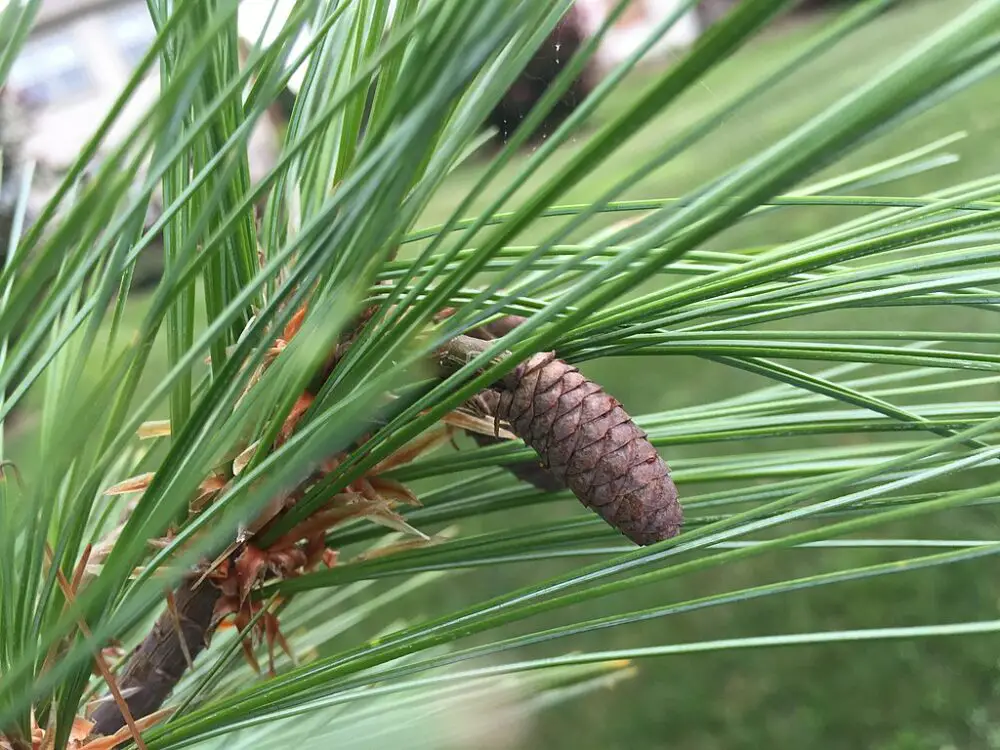The white pine tree is a giant native conifer in eastern North America. Its needles are used to make white pine needle tea with a long list of medicinal properties. To make this tea, steep the white pine needles in hot water for about 20 minutes or until the needles sink to the bottom of your cup.
White Pine Profile
You may find taller trees, like redwoods, in places like western parts of the US. But, in eastern North America, the eastern white pine tree is a giant native conifer.
White pine trees can grow 40 feet wide and 80 feet tall. It stands out from the rest of the foliage, adding an impressive structure to extensive gardens.
Although its scientific name is Pinus strobus, this conifer most often goes by its name, eastern white pine.
What Are You Foraging For Right Now?
We're thrilled to hear your ideas. What would you like to submit today? Feel free to share your thoughts and experiences with us.
It comes from the Pinus genus, which includes just over 100 plant species.
The white pine tree is fast-growing and long-living as an evergreen, making it a perfect all-year plant for your yard.
How to Identify White Pines
These conifers are popular in home landscapes with year-round green color and vibrancy.
White pine needle trees are lush, evergreen trees that are not only graceful but beautiful as evergreen foliage. The tree looks soft and lovely with 3-5 inch needles (7.5-12.5cm).
Eastern white pine trees sport greyish trunks that are tall and straight, growing up to a diameter of 3 feet. Irregular-shaped branches grow in a whorled fashion. In other words, a spiral, convoluted manner around the trunk.
You can reasonably estimate these conifers’ age by counting the number of branch whorls.

Eastern White Pine Identification By Needles and Cones
The eastern white pine needles appear:
- Long
- Soft
- Velvety
- Blue-green in color
- Five needles per bundle (a fascicle)
These bundles (fascicles) appear in clusters that look like small bushes, with needles ranging from 2 to 6 inches.
In contrast to the shorter-leaved evergreen family, the eastern white pine needles usually wave in the wind.

You can also identify white pine trees by looking at their cones.
They are:
- Cylindrical
- Contain the tree’s seeds
- Small
- Yellow
- Usually clustered around the base of the needles for the current years’ growth
- Female pine cones hang downward from branches at 3 to 8 inches long

Where do White Pines Grow Best?
In the eastern half of the United States, Pinus strobus is known as a common landscape and native forest tree. But, white pine trees have made their way to Europe and beyond.
For a white pine tree to thrive, it needs well-draining, dry, acidic, and moist soils.
Although moist soil is best, it’s a hardy plant that can handle anything from bogs to dry, rocky ridges.
White Pine Tree Uses
The eastern white pine is famous as the state tree of Maine and Michigan. But, this needled evergreen is also it’s used as a:
- White pine tea
- Windbreak and summer shade
- Medicinal remedy
- An aid to weight management
- Immune booster
White Pine Tea Benefits
Native Americans were some of the first to recognize the quality of the Pinus strobus, terming it the Tree of Peace.
But, white pine needle tea has taken over from nutrient-fueled hemlock and dandelion tea as the new craze. Moreover, due to its healing properties, it gained the attention of Eurocentric science and research.
Sipping a hot cup of white pine needle tea is easy with its pleasant smell and taste.
White pine tree tea benefits include:
- It’s jam-packed with Vitamin C (5 times more than lemons).
- The needles aid in battling scurvy, skin complaints, fatigue, varicose veins, blood pressure, and heart disease.
- It fights general illnesses and infections like coughs and sore throats.
- White pine needles are full of vitamin A to benefit hair, skin regeneration, red blood cell production, and eyesight.
- It contains antioxidants, which reduce free radicals and potentially battle the disease.
- There is the potential possibility to aid depression, obesity, and allergies.
When choosing white pine needles for tea, be careful which you use. Some varieties of fresh eastern white pine needles can contain harmful toxins.
White Pine Planting and Care
The most important thing to remember about the white pine trees is that they won’t thrive in a poor location.
Choose an area that can provide soil that is:
- Rich
- Moist
- Well-draining
- Slightly acidic
- It gets full sun (but it will tolerate some shade)
Planted in the right location, the white pine tree is easy to care for.
Another consideration to make includes the size of the tree. If you have a small backyard, do not plant this conifer, it will take over your garden as it grows up to 80ft wide and 40 ft tall.
You could be left peering over the needles to see your garden, as they have even been known to reach 150 feet.
Be sure to plant the white pine tree in conditions that won’t damage it.
Keep it clear of:
- Road salt
- Winter wind
- Air pollution
- Ice and snow
White pine trees are also susceptible to white pine blister rust, a botanical disease that can kill the tree. Wild currant bushes and gooseberry bushes harbor rust.
So, if you’re planting white pine trees, ensure you eradicate these shrubs from the planting area.
Getting into the great, wet outdoors in search of edible plants, herbs, fruits and fungi is one of Sarah’s favorite outdoor pursuits. She thinks there’s nothing better than combining her passion for hiking with the start of the foraging season. Sarah’s definitely not afraid of a little rain and dirt, it’s all part of the fun.

